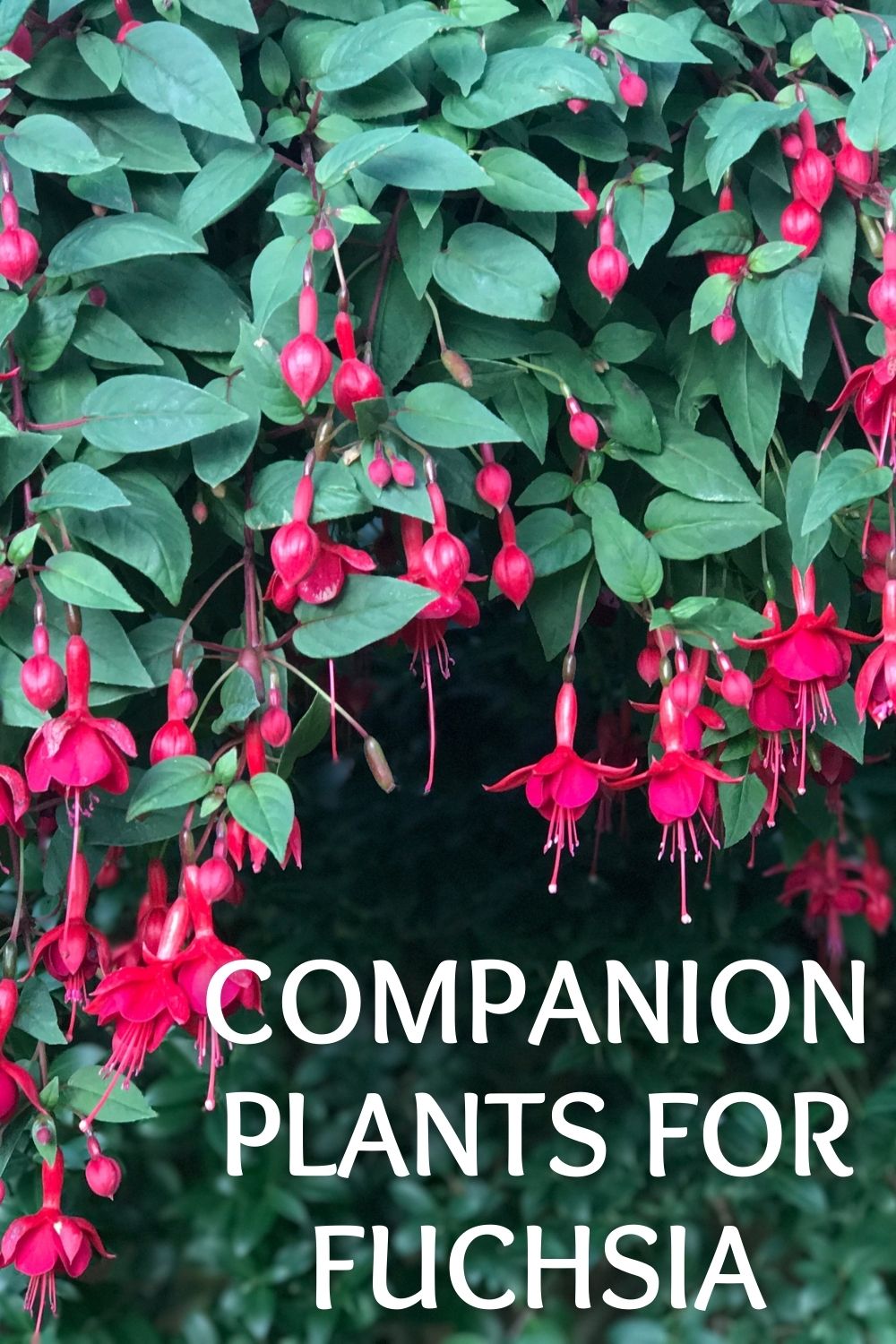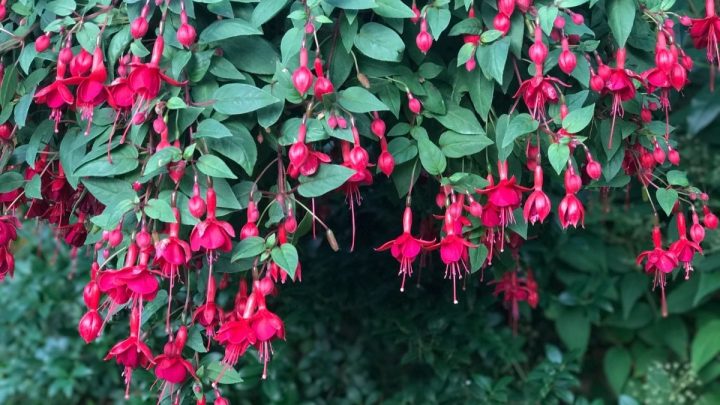I was recently struck by how much I’m looking forward to my Fuchsia (Fuchsia x hybrid) coming into bloom. It’s located in a shady spot in my rock garden. When it’s in full bloom, the Fuchsia looks like a fountain of exotic, red flowers.
As I wait for it to bloom, I’ve been thinking about companion plants for Fuchsia. I’m planning on pairing plants and flowers that create a well-balanced ecosystem for my Fuchsia, as well as the other plants.
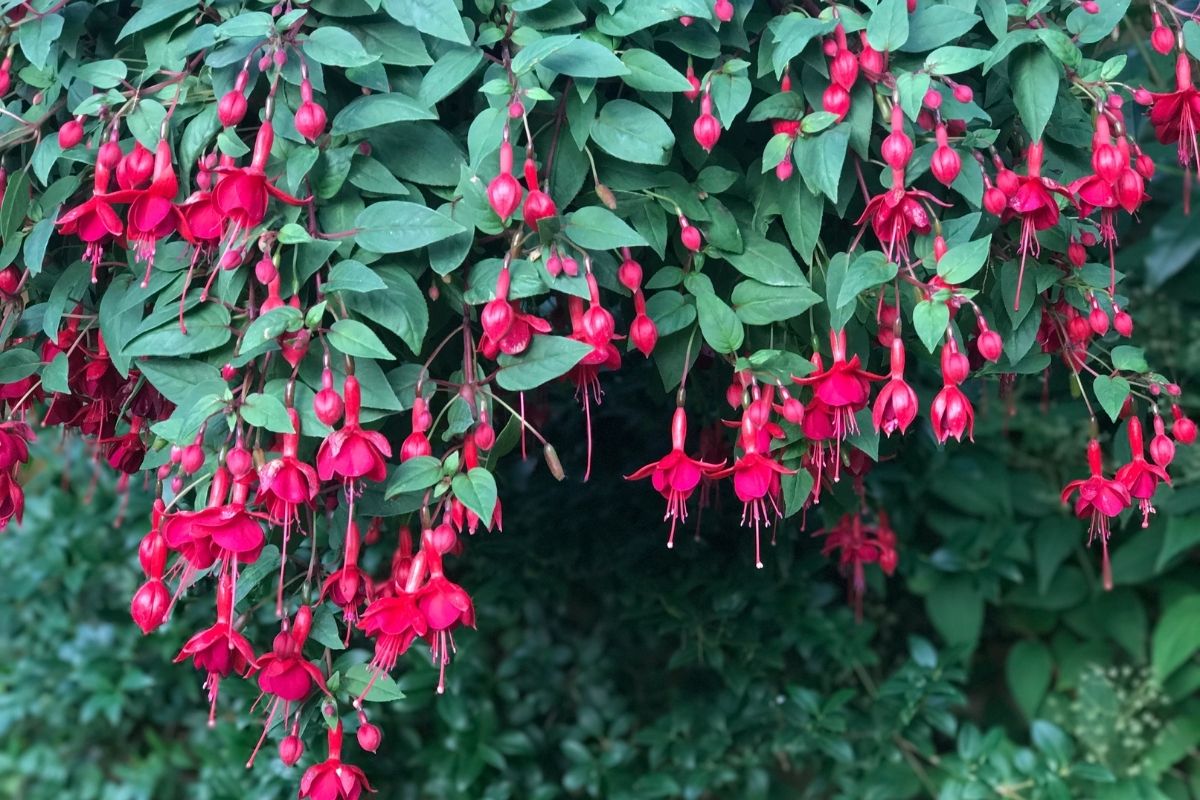
After much research, I found plants that can enhance its growth and flower production. Some of the companion plants also deter pests, attract pollinators, and increase nutrients.
Learn more about companion plants for Fuchsia and successful plant pairing strategies.
What Is Companion Planting?
I think about companion planting as a plant partnership. It’s all about the relationships among plants, and how they help each other. Companion planting improves the overall ecosystem of your garden and creates an environment where all your plants thrive.
What Are the Best Companion Plants for Fuchsia?
Did you know that the genus Fuchsia has over 100 species and up to 5,000 cultivars? No matter which one you choose for your perennial garden, they all have the same growing conditions.
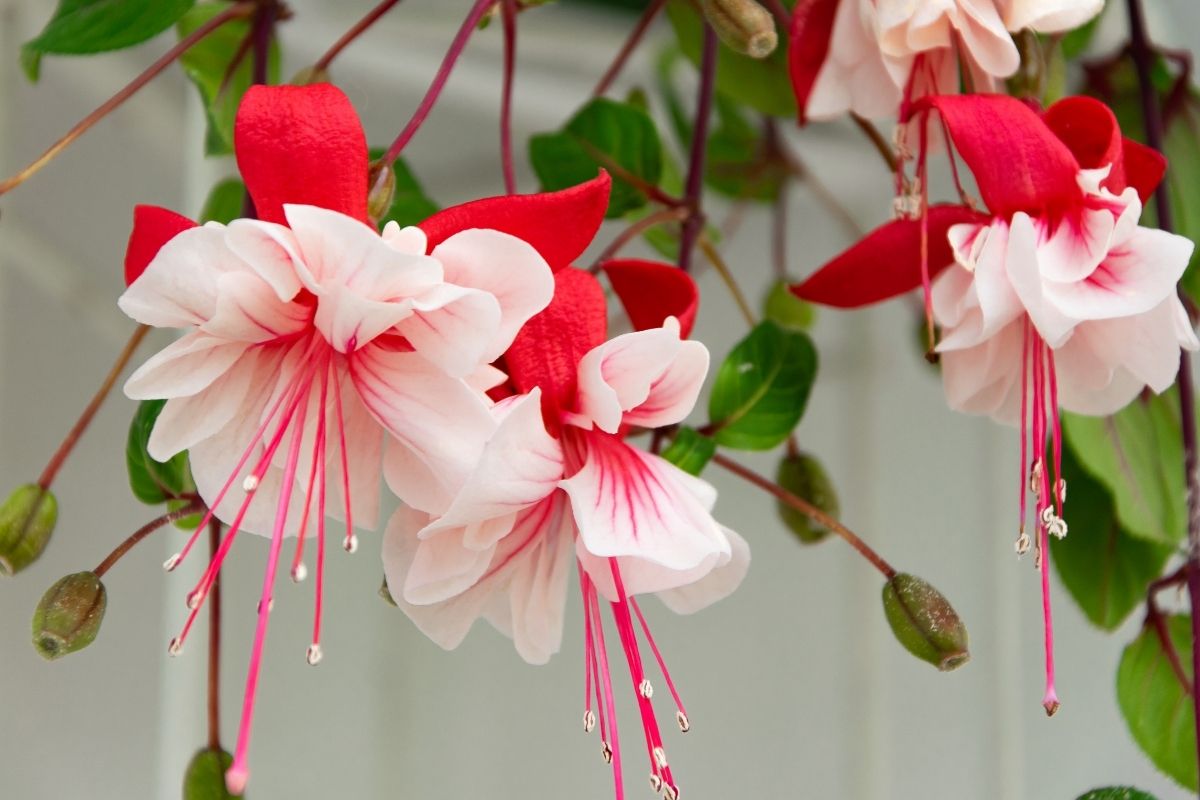
Consider the following growing conditions when selecting companion plants:
- Cool temperatures from 60°F (15°C) to 70°F (21°C)
- Dappled sunlight
- USDA Hardiness Zones 6 to 9
- Moist, well-drained soil
Since the following companion plants have similar growing requirements, you can plant them with any of your Fuchsia cultivars.
1. Hosta (Hosta)
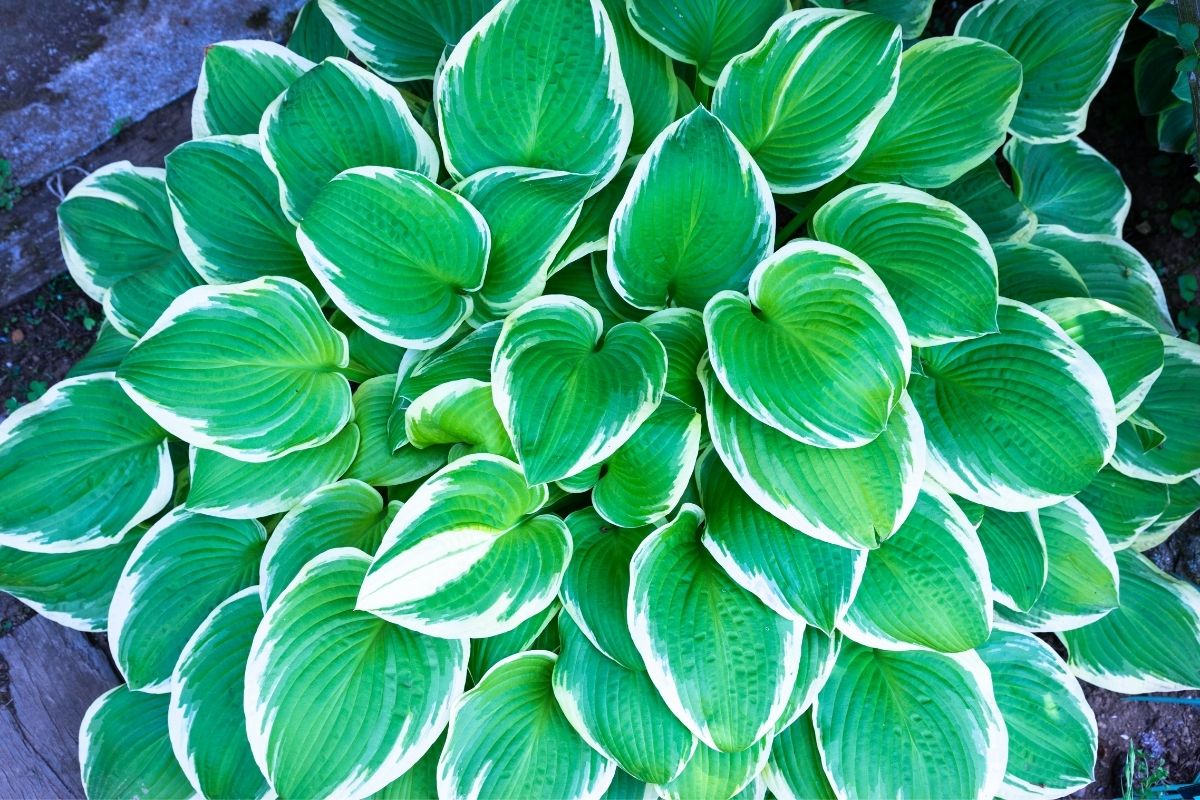
Hosta belongs to the Lily family. They have large foliage during the spring and summer, then grow tubular lilac-colored flowers in the fall. These perennials need shade, just like Fuchsia.
Hosta thrives in perennial gardens, rock gardens, along the edging, and under tall trees. Their large, showy leaves help control weeds and keep the soil moist. Both of these characteristics are beneficial to Fuchsia.
2. Coral Bells (Heuchera americana)
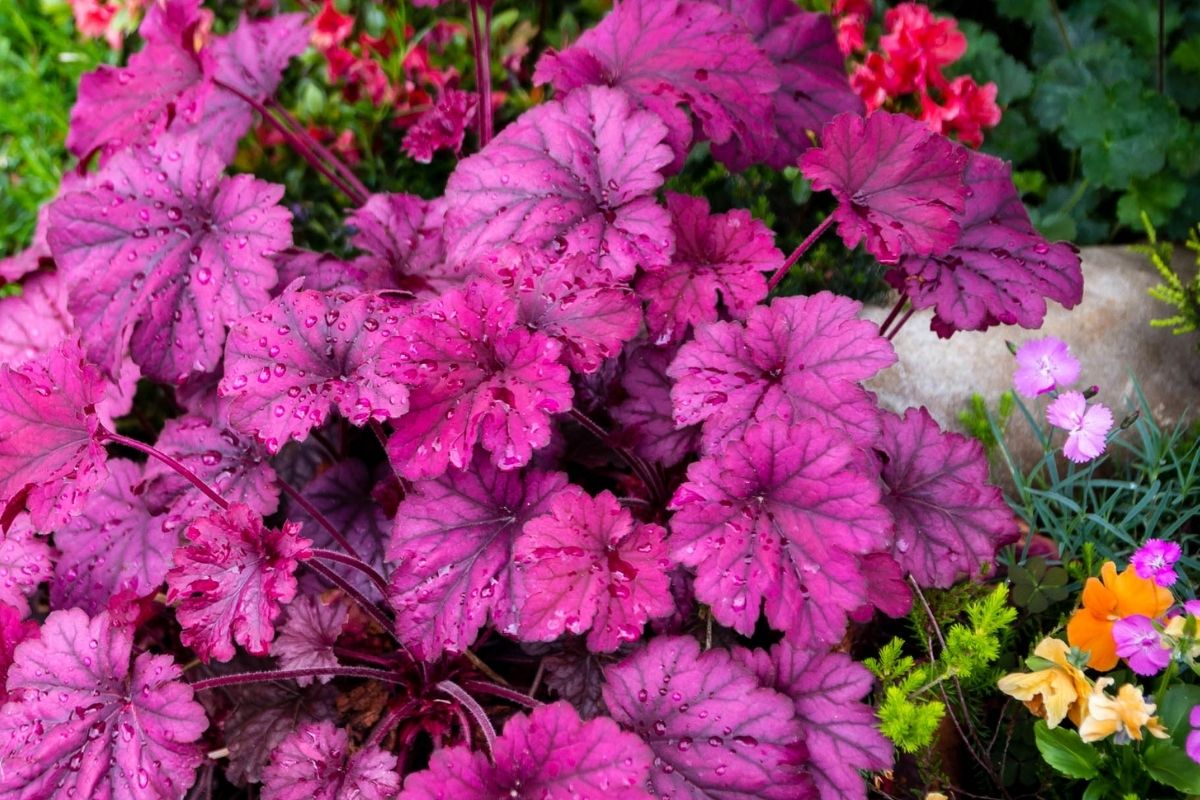
Coral Bells have several common names. Maybe you’ve heard them referred to as Alumroot or Rock Geranium. These perennials feature splashy leaves and shades of orange, cream, almond, green, and lavender. Coral Bells are natural deterrents to foraging animals.
As companion plants for Fuchsia, they deliver real benefits to your perennial garden, such as improving pollination and discouraging deer and rabbits from nibbling on your Fuchsia.
3. Rhododendron (Rhododendron catawbiense)
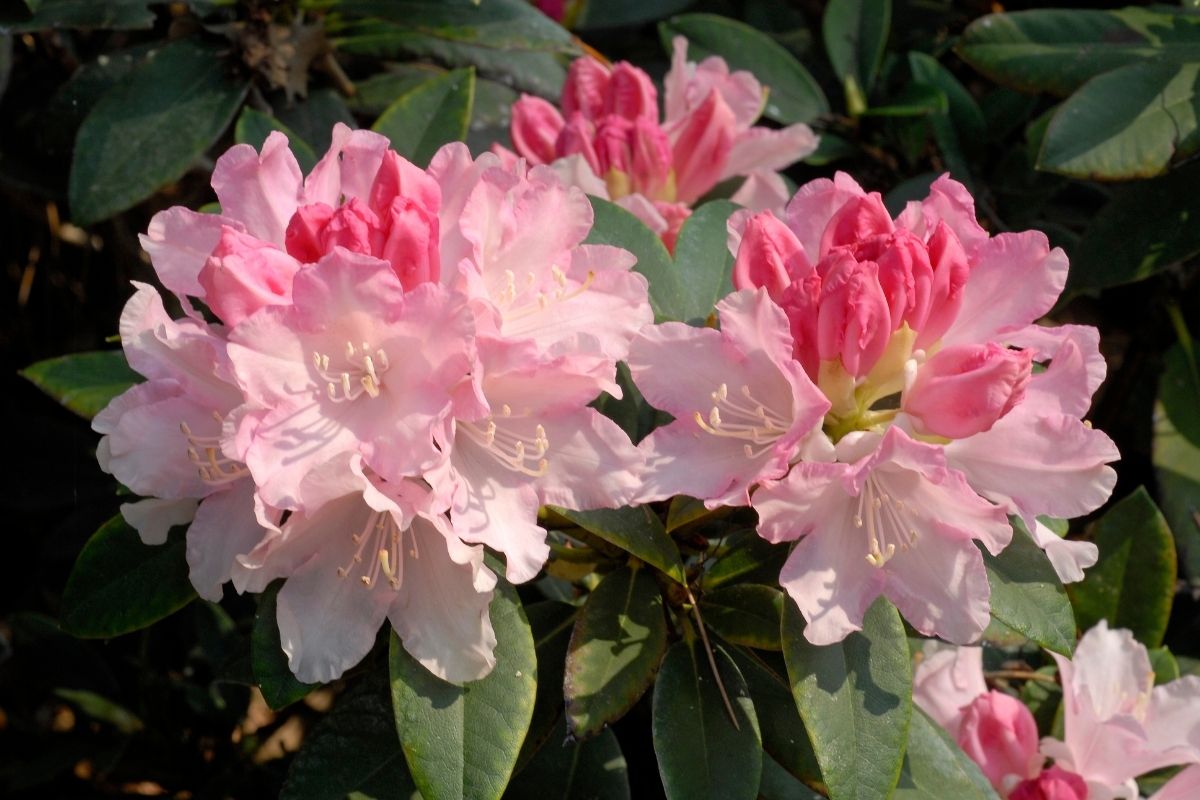
Also known as Mountain Rosebay, Rose Bay, and Purple Rhododendron, this is a large broadleaf evergreen that offers shade to Fuchsia. It’s native to wooded slopes, so it grows well in rock gardens and shady perennial gardens.
Rhododendron can grow from 6 to 10 feet tall, so it’s best suited for large gardens or natural areas. Like Fuchsia, it enjoys cool temperatures. It’s a beneficial companion plant for Fuchsia, attracting pollinators like bees, hummingbirds, and butterflies. This makes them suitable for pollinator and butterfly gardens.
4. Weigela (Weigela florida)
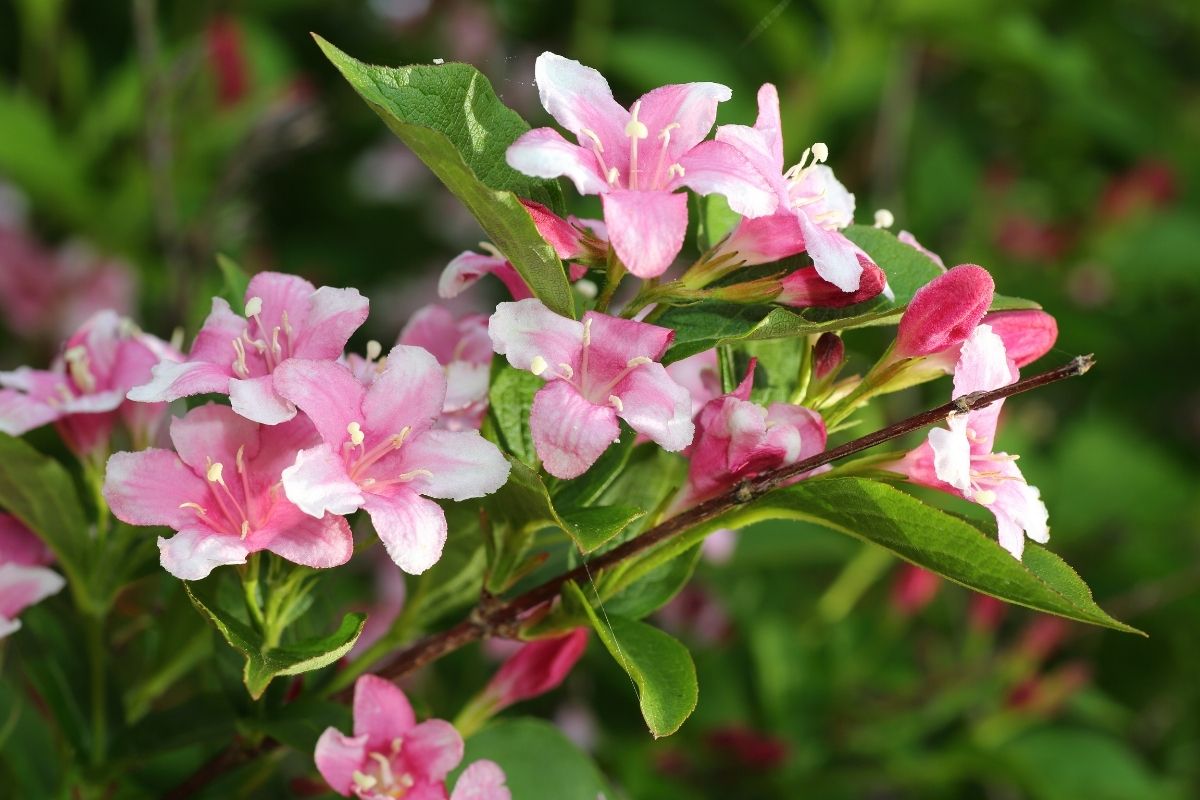
Belonging to the honeysuckle family, Weigela features a rounded, shrub appearance. Weigela also has dwarf varieties if you have limited space.
This companion plant for Fuchsia features showy flowers in red, purple, pink, yellow, or white flowers. Its colorful flowers attract many pollinators, including butterflies and hummingbirds. This is another plant that discourages foraging by deer.
5. Begonia (Begonia)
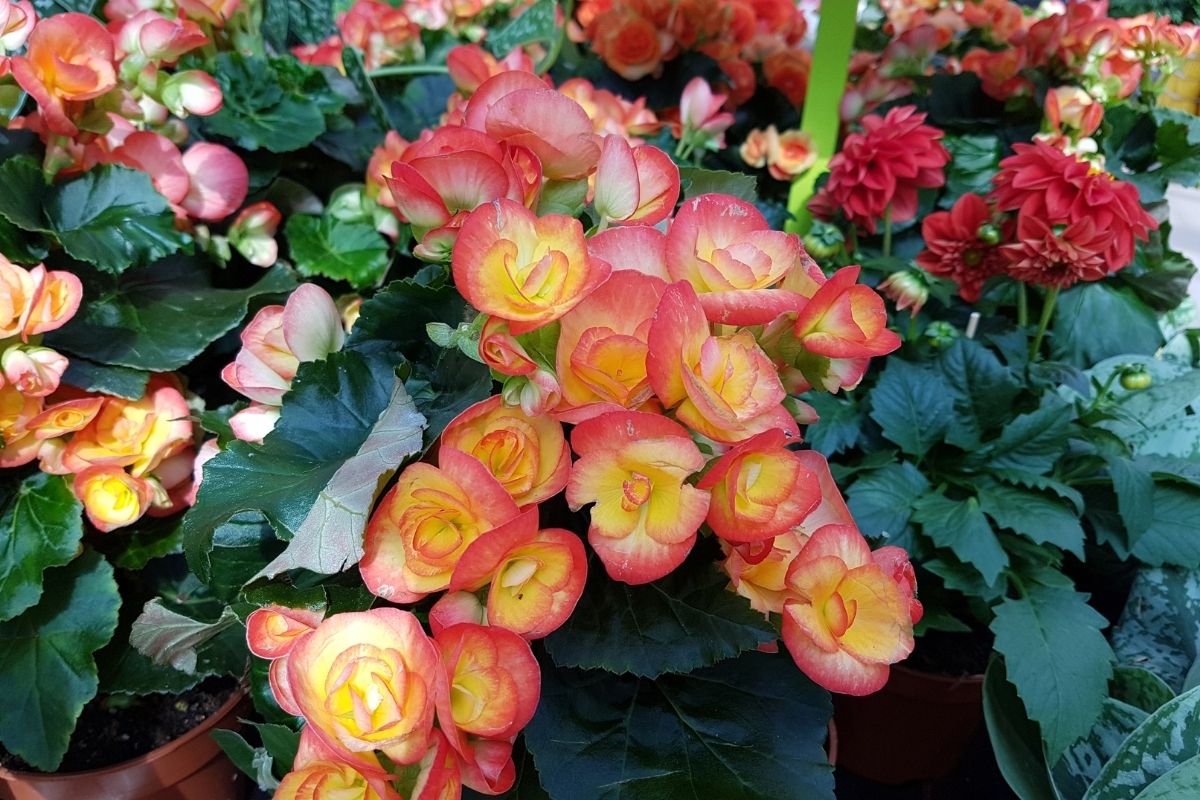
If you really want to add color to your perennial garden and complement your Fuchsia, Begonia is the way to go. Begonia plants have hundreds of hybrids in just about every color. Whether you need them as fillers at 2-inches tall or larger plants that are one foot tall, you can find them.
They’re hardy, prefer shady areas, and don’t require much care, making them an ideal plant combo with Fuchsias.
6. Nasturtiums (Tropaeolum majus)
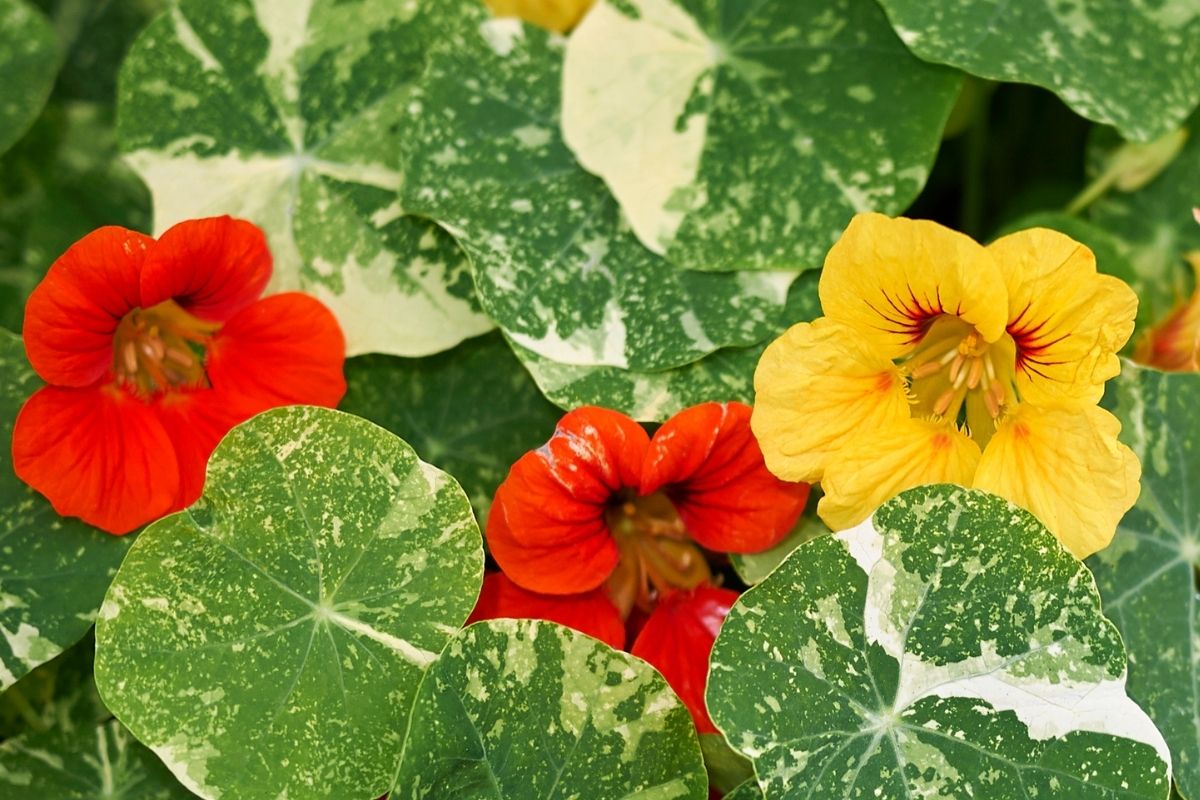
The multi-colored blossoms and long trailing foliage attract pollinators and help control weed growth. These companion plants for Fuchsia make wonderful additions to rock gardens, slope gardens, butterfly gardens, and cottage gardens.
Nasturtiums also help boost soil health and limit damage from deer and rabbits.
7. Lemon Thyme (Thymus x citriodorus)
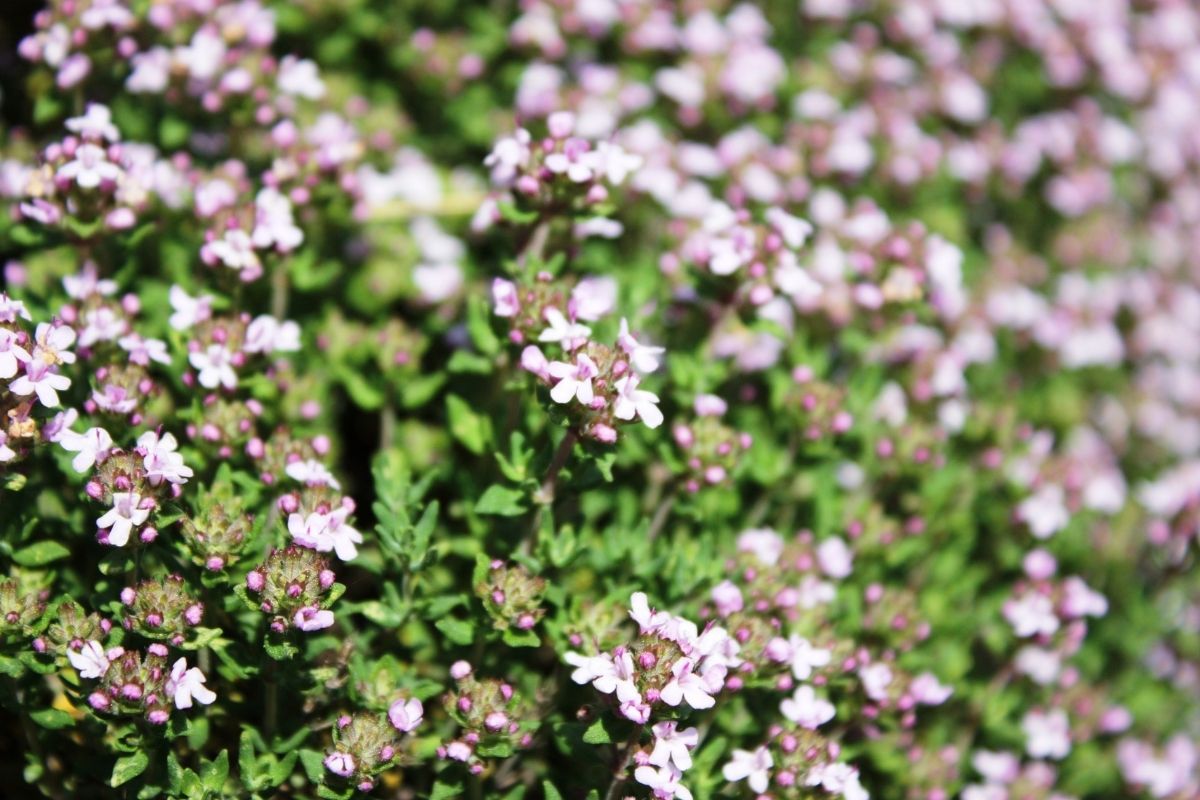
Lemon Thyme features small yellow and green leaves. As you walk past them, you’ll detect a strong, lemon scent. This is pleasant for humans, but insects don’t appreciate the odor at all.
For this reason, Lemon Thyme makes a beneficial companion plant for Fuchsia. It decreases pest damage and infestations. This also limits plant diseases caused by damaged stems and leaves.
FAQ about companion plants for fuchsias
What is the best companion plant for Fuchsia?
Think about companion plants for Fuchsia in terms of problem-solving. You want a plant that improves aesthetics, highlights your Fuchsia, improves pollination, and assists with soil health. Nasturtiums are nice colorful companions, and they attract beneficial pollinators.
What should I put in a hanging basket with Fuchsia?
Although Fuchsia alone makes stunning hanging baskets, you can add simple foliage plants to the basket. This way, you won’t take away from the flowering Fuchsia. Try Dichondra (Dichondra argentea) with its heart-shaped silver foliage or small, trailing ivy plants.
Do vegetables grow well with Fuchsia?
If you want to plant vegetables with Fuchsia, you have to choose ones that grow in partial shade and cool temperatures. Your choices are limited because most veggies like sunshine. A few possibilities that need partial sun are radishes, cabbage, broccoli, and beets.
What should you not plant next to Fuchsia?
Similar to vegetables, you shouldn’t choose plants that need sandy soil or full sun to grow. Some examples are Bee Balm, Hibiscus, Cardinal Flower, and Rose Mallow. Make sure you check the growing requirements of any companion plants for Fuchsia.
How close do companion plants need to be to Fuchsias?
Many gardeners ask this question. The answer is that it depends on the plant. Sometimes, you plant companion plants several feet apart, while others touch the Fuchsia. When you select your companion plants, ask your garden center questions about when to plant, proximity, and let them know other details about your garden.
FAQ about Growing Fuchsias
Do Fuchsias like sun or shade?
Fuchsias like shady areas with moist soil and cool temperatures.
Where is the best place to plant Fuchsias?
The best places to plant Fuchsias are shady, natural areas. They’re suited for pollinator gardens, rock gardens, and woodland areas.
What soil conditions are the best for growing Fuchsia?
When growing Fuchsia, select an area that has moist, acidic soil with a pH of 6.0. It should have a mixture of organic matter and loam.
Should you cut back Fuchsias?
The only time you need to cut back Fuchsias to the ground is after the fall bloom.
How do you keep a Fuchsia blooming?
To encourage Fuchsia blooming, lightly trim the tips in the spring. This encourages bushy growth and blooms.
Conclusion
Today’s ornamental gardens are mini-ecosystems that focus on providing a balanced natural habitat for plants and flowers. Companion plants for Fuchsia help create this healthy environment. They boost soil health, control weeds, improve pollination, and repel pests. All of these things have real benefits for your Fuchsia.
Are you ready to try companion planting for Fuchsia? Even a few companion plantings can result in big benefits for your garden’s ecosystem.
